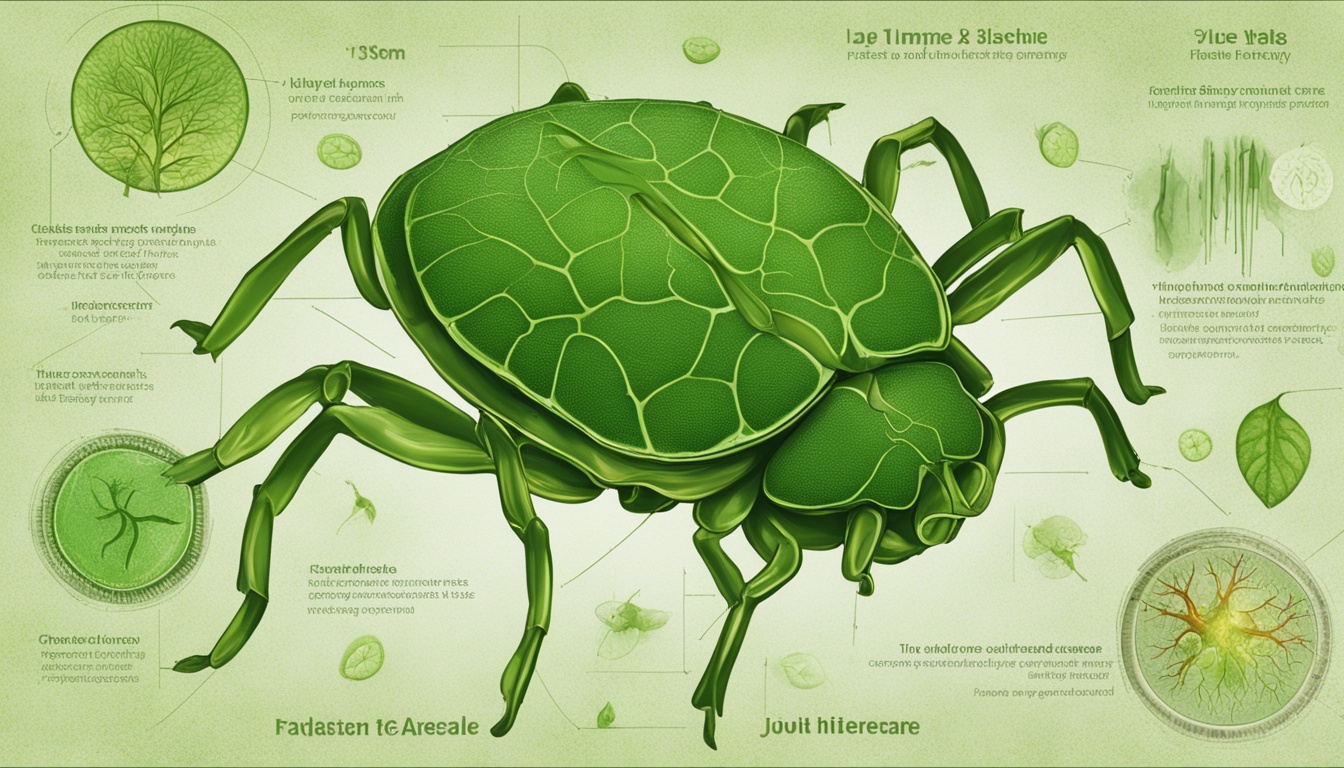Lyme disease, or Borreliosis, comes from the bacterium Borrelia burgdorferi. Ticks spread it to humans, especially the black-legged tick. It’s common in parts of Asia, Europe, and the United States, like the northeast and upper midwest.
Key Takeaways:
- Lyme disease is a tick-borne illness caused by the bacterium Borrelia burgdorferi.
- The disease is primarily transmitted through the bite of infected ticks.
- It is prevalent in various regions, including Asia, Europe, and parts of the United States.
Lyme Disease Symptoms and Treatment
Lyme disease is caused by a bacterium called Borrelia burgdorferi. It spreads to humans through tick bites. The disease goes through stages, with each stage having its own set of symptoms. The first sign, known as early-stage Lyme disease, usually starts 3 to 30 days after being bitten. Symptoms at this point can include:
- Fatigue
- Fever
- Headache
- Muscle and joint pain
- Swelling of the lymph nodes
In this stage, people often develop a rash called erythema migrans. It looks like a bull’s-eye, with a red outer ring around a clear center. This rash is a key sign of Lyme disease.
Without quick treatment, the illness can get worse. This more serious stage is called chronic Lyme disease, which can impact the body in various ways. Symptoms at this stage may include:
- Severe fatigue
- Muscle and joint pain
- Cognitive difficulties
- Neuropathy
- Cardiac abnormalities
To treat Lyme disease, doctors often use antibiotics. These medicines can kill the bacteria that cause the disease when used early. Drugs like doxycycline, amoxicillin, and cefuroxime are commonly prescribed. The length of treatment depends on how advanced the disease is and how well the patient responds.
Antibiotics Used in the Treatment of Lyme Disease
| Antibiotic | Dosage | Treatment Duration |
|---|---|---|
| Doxycycline | 100 mg twice a day | 10-28 days |
| Amoxicillin | 500 mg three times a day | 14-21 days |
| Cefuroxime | 500 mg twice a day | 14-21 days |
If you think you might have Lyme disease, see a doctor as soon as possible. Early diagnosis and treatment lead to full recovery for most. If the disease becomes chronic, your doctor may need to try different treatments to help with long-lasting symptoms.
Stem Cell Therapy for Lyme Disease in Thailand
Stem cell therapy is becoming a key treatment for Lyme disease. It brings hope to patients in Thailand. These cells can help lower inflammation, balance the immune system, and repair tissues. Mesenchymal stem cells (MSCs) stand out for their benefits.
Thailand is now a top spot for stem cell therapy. People from all over come for its advanced treatments. Those with Lyme disease can find relief in Thailand’s expert clinics.
Stem cells target the root causes of Lyme disease. They work on the bacteria and immune imbalances. This strategy aims to ease symptoms and boost the patient’s life quality.
In short, stem cell therapy is a major advancement for treating Lyme disease. Thailand’s role in regenerative medicine offers new hope to those fighting Lyme. This breakthrough promises a better future for patients.
FAQ
Q: What is Lyme disease?
A: Lyme disease is a tick-borne illness due to the bacterium Borrelia burgdorferi. It gets to humans through infected tick bites, particularly black-legged ticks.
Q: What are the symptoms of Lyme disease?
A: Symptoms vary by stage. Early signs might include fatigue, fever, a headache, and muscle or joint pain. You might also see a bull’s-eye rash.
Q:
A: Swollen lymph nodes are also common.
Q: How is Lyme disease diagnosed?
A: Doctors look at your symptoms, medical history, and tick exposure. They might do blood tests to confirm, like the EIA and Western blot.
Q: What is the treatment for Lyme disease?
A: Antibiotics are the usual treatment, depending on the disease’s stage and severity. For chronic cases, a longer treatment might be needed.
Q: Can stem cell therapy help in the treatment of Lyme disease?
A: Mesenchymal stem cell (MSC) therapy is showing potential for easing Lyme disease symptoms. It reduces inflammation, helps the immune system, and supports healing.
Q: Where can I find stem cell therapy for Lyme disease in Thailand?
A: Thailand is a place for stem cell therapy for Lyme disease. To find clinics focused on this therapy, do your research and talk to doctors.

